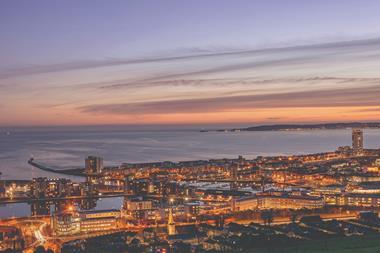Right now, most businesses are understandably looking at how to simply get through the coming days, weeks, and months.

However, despite being a New Year we are now into another lockdown, and it remains a period of time for both reflection and future-gazing; what have we learned from the past year that will have a meaningful impact not just in the months ahead, but in years to come?
The good news is that the long-term trends present exciting and positive opportunities for brands, landlords, and operators. If the pandemic has made one thing clear, it is that people still need places. The most enduring images from 2020 might be empty streets, but all businesses will fondly remember the retail reopening queues, (safely) full pub gardens, and tables and chairs sprawling across roads and pavements, where many of us enjoyed alfresco dining (even in the cold weather under heaters) right up until Christmas. Operators have responded to the pandemic, making as much space as possible available for safe reintegration of customers, and they did not disappoint in turnout. Making the best use of space will continue to be a driver for success, and while Covid has necessitated change, in time the way we adapt will be determined once again by people not circumstance.
Securing the short-term position by respecting the value of place will buy some time, so for businesses able to do this, what can we expect to see in a year? First and foremost, a more settled consumer. They have, like businesses, been forced to adapt to a constant change of restrictions, but by early 2022 there will be a more consistent approach to the way people spend their time and money. This does not mean a return to the past, however. The physical landscape has changed, particularly in city centres, so there will be new consumer trends to align with.

With a greater blend of home and office-based working habits comes opportunities for more flexible working locations and new business incubators – both bringing a fresh footfall that will need to be accounted for. It also means online and local spend will stay strong, even with a gradual return to public transport use and destination visits, but this alone should not encourage store closures. As is the case now, ‘showrooming’ will be a pivotal element in driving online spend, so strategic locations should be retained, and reimagined with more experiential concepts. Understanding the customer, and what drives them, has never been so important.
When we start to emerge out of the pandemic as a whole, more sustainable lease models will still need to be implemented as we get to grips with the new normal, replacing the turnover-based models currently seen by many as an industry saviour. By this point more nuanced deals will be required, a better reflection of performance and the change in consumer shopping and dining trend, and an understanding of the need to support new businesses and those looking to resurrect. Some stores will inevitably close, but landlords will need to fill them, so the businesses that maintain the best relationships directly with them will find that they are able to have the most productive and affable conversations over new deals.
While the early 2020s will be defined by the word ‘support’, by the mid-2020s the watchword will be ‘flexible’. The evolution of the High Street is already well underway, and over the course of the next few years will start to look like a very different place, with suburban areas reviving a livelier daytime economy. Community and neighbourhood spaces have always been crucial to the makeup of these areas, but how and when they are used looks set to change for good, as they experience greater popularity and reliance during previously ‘off-peak’ times.
Retail centres will have adopted a more flexible model, by incorporating a wider mix of use that integrates commercial and residential with retail. Design of the space will be looked at differently, as consumers increasingly look for convenient and tailored experiences closer to home. It’s entirely possible that “live, work, eat, and play” will be mantra of destinations, and therefore space and purpose will have to adapt accordingly – can a customer be truly satisfied with everything on their doorstep, or will they look to revert to old patterns of travelling for more full day out destinational visits?
So, when I say we need to focus on the wood and the trees, what I mean is the businesses best placed to have long-term success are the ones that respect the nuances of this pandemic and adapt to them now, but still look to what the future might hold. It’s very easy to get wrapped up in today’s challenges because they are so steep, and for the first time in a long time short-term strategies are saving businesses. Now is the time to start looking beyond the picture right in front of you.
Alex McCulloch is director at CACI





























No comments yet